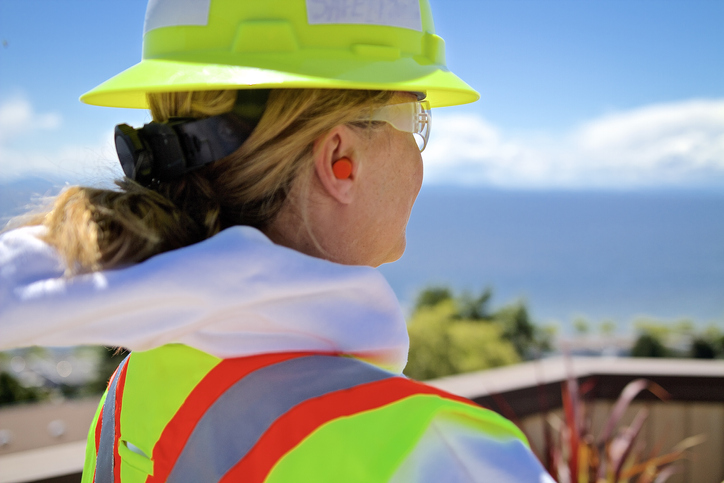Transmitting sounds through our internal hammer, anvil, and stirrup—paired with a variety of auditory structures—is one of the five main ways in which we sense our surroundings. But, our hearing is at risk. In the United States, hearing loss is the third most common chronic physical condition, above diabetes and even cancer. About 22 million workers are exposed to hazardous noise each year, and some industries, like construction, are highly susceptible. To minimize damage to workers’ hearing, ANSI/ASSP A10.46-2020: Hearing Loss Prevention For Construction And Demolition Workers offers comprehensive, helpful guidance.
What Sounds Are Hazardous?
The National Institute for Occupational Health and Safety (NIOSH) recommended exposure limit (REL) for occupational noise exposure is 85 decibels, A-weighted, as an 8-hour time-weighted average (85 dBA as an 8-hr TWA) using a 3-dB exchange rate. OSHA’s noise standard, 29 CFR 1910.95, requires employers to have a hearing conservation program in place if workers are exposed to noise at this level.
Therefore, exposures at or above 85 dBA are considered hazardous. Comparatively, a normal conversation is about 50-60 dBA, highway traffic is around 70 dBA, and fireworks, which we recognize for their thunderous cracks in the sky, are around 150 dBA.
The Centers for Disease Control and Prevention (CDC) notes the harmful exposure limit to be reached if a person has to raise his or her voice to speak with someone 3 feet away (at arm’s length).
What Are the Sources of Hearing Loss in Construction?
As anyone who has lost sleep from the rattling of nearby building projects can attest, construction operations can be quite loud. At the same time, demolition is associated with a level of loudness, as it by definition encompasses destruction.
For construction and demolition operations, a multitude of everyday actions expose personnel to sounds that surpass the NIOSH REL for occupational noise. For example, a jackhammer typically runs around 90 dBA, and pile drivers are often measured above 100 dBA.
How Does ANSI/ASSP A10.46-2020 Help Prevent Hearing Loss?
To help employers prevent occupational hearing loss among their workers, ANSI/ASSP A10.46-2020 offers guidance that applies to all construction and demolition workers with potential noise exposures—continuous, intermittent, and impulse—of the NOISH recommended exposure level of 85 dBA and above.
Specifically, ANSI/ASSP A10.46-2020 outlines guidance for identifying situations, tools, tasks, and work areas that may result in exposures at or above 85 dBA. The standard further details guidelines for when and how to control these hazards, and includes measures for hearing protection devices (HPDs) and audiometric testing provided by the employer to employees exposed to harmful noises.
ANSI/ASSP A10.46-2020 also covers training for employers to provide to their employees, as well as measures for recordkeeping and annually evaluating the hearing conservation program.
ANSI/ASSP A10.46-2020: Hearing Loss Prevention For Construction And Demolition Workers is available on the ANSI Webstore. As a part of the expansive ANSI/ASSP A10 standards for construction and demolition, it is available with many related documents at a discount as the ANSI/ASSE A10 Construction Package – Parts 1 To 49.
